When I visited a local farm to check out the pumpkins growing there, I was also fascinated to see an intercropped system of plantains, malanga, yams, sweet potatoes and even the occasional bird-planted papaya tree that had been allowed to grow by the farmer.
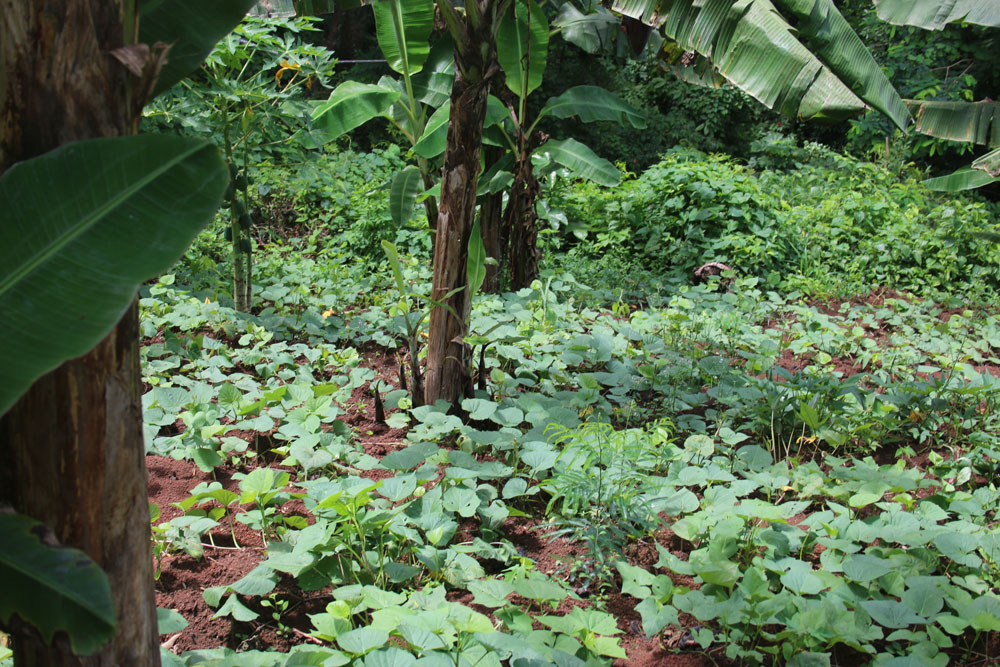
The tropical sun is intense, allowing a gardener to plant some of his crops in partial shade even though that would not work in a more temperate region.
This system, even on a small scale, could feed a family a significant percentage of their calories. Sometimes we permaculture folk think we are cutting edge… visiting farms and other portions of the world quickly reveals that a lot of people have already seen the patterns possible and have worked with them before.
Many of the farms I’ve seen here are mixed agroforestry plots. You might see cocoa, pigeon peas, corn, mangoes, bananas, malanga, yams, breadfruit, calabash trees, noni, coffee and sweet potatoes all growing together.
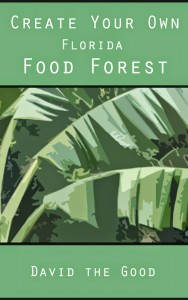 If you live in Florida or another tropical or subtropical area, these types of gardens make a lot of sense. This is the system I encourage you to use in my little book Create Your Own Florida Food Forest.
If you live in Florida or another tropical or subtropical area, these types of gardens make a lot of sense. This is the system I encourage you to use in my little book Create Your Own Florida Food Forest.
It is incredible to see these types of systems being used on such a large scale, albeit in a patchwork of tiny farms scattered across the mountainsides.
Trees provide shade and protect the ground from battering rain. They also hold the ground in place. They drop leaves and give good guys a place to live. Short crops such as sweet potatoes, pumpkins and corn provide quick yields.
Mix in some perennial vegetables for salads, such as katuk, Malabar spinach, cranberry hibiscus and you’ll have all you need to eat well.
All These Great Staples…
When I visited the farm the yams were just coming up. I didn’t see them at first because they were mixed up in the sweet potatoes. The farmer told me he would soon be putting out stakes for them to climb.
I circled some since they’re hard to see:
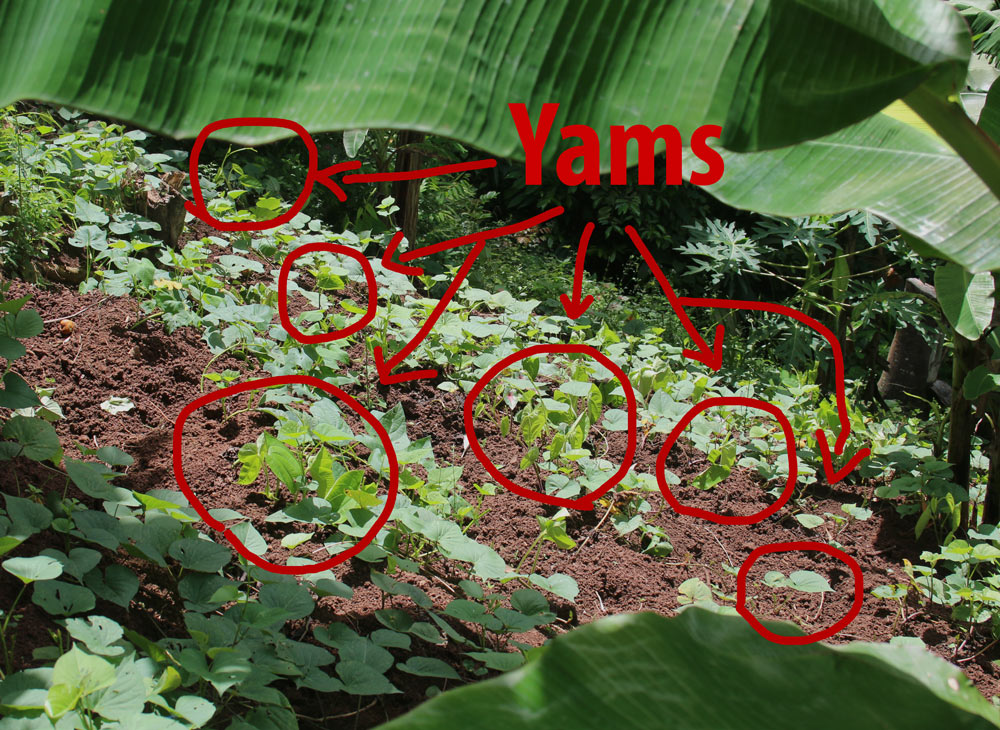
Remember, yams and sweet potatoes are not the same thing. These are the same yams I showed a couple of months ago in this video:
I have some growing in my garden now. Unlike the typical Dioscorea alata found wild in Florida, this type consistently makes a smaller, easy to peel and process root.
Plantains and bananas can be a staple in their own right.
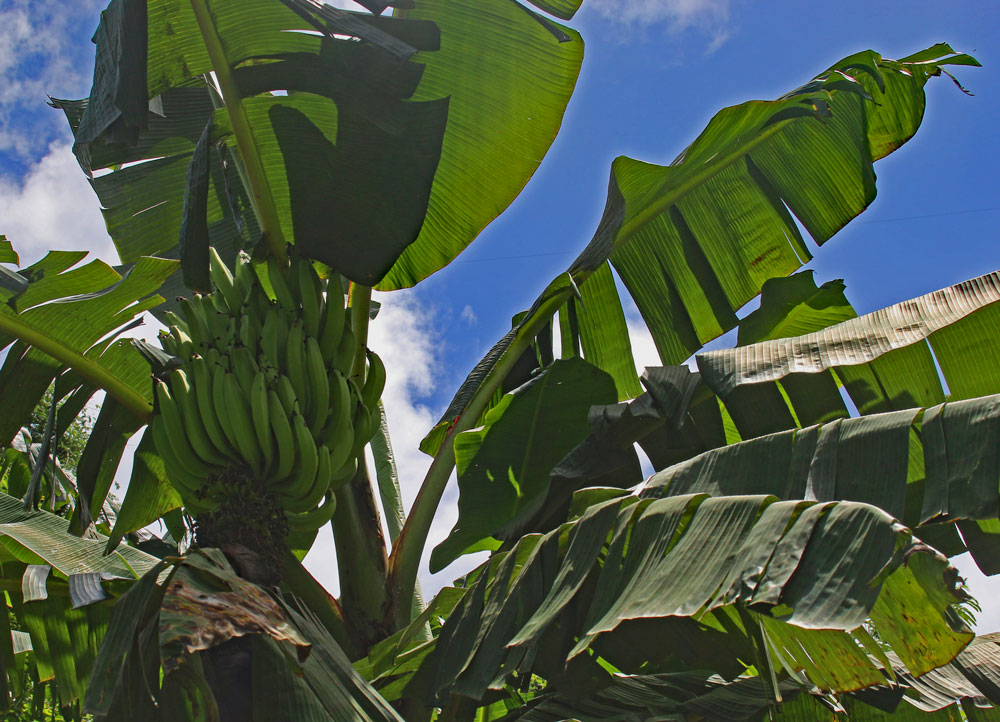
That stalk right there, when mature, will probably weigh over 50 pounds. And that’s only one of many trees producing fruit at this time.
I cover bananas as a survival crop in a recent episode of Totally Crazy Easy Gardening:
Quite versatile and I didn’t even get into the more esoteric food uses for bananas and plantains.
On the ground beneath, the rambling sweet potatoes will also produce hundreds of pounds of food. The yams will as well. And malanga, though not as productive, provides both young leaves that can be eaten in soups and some good roots.
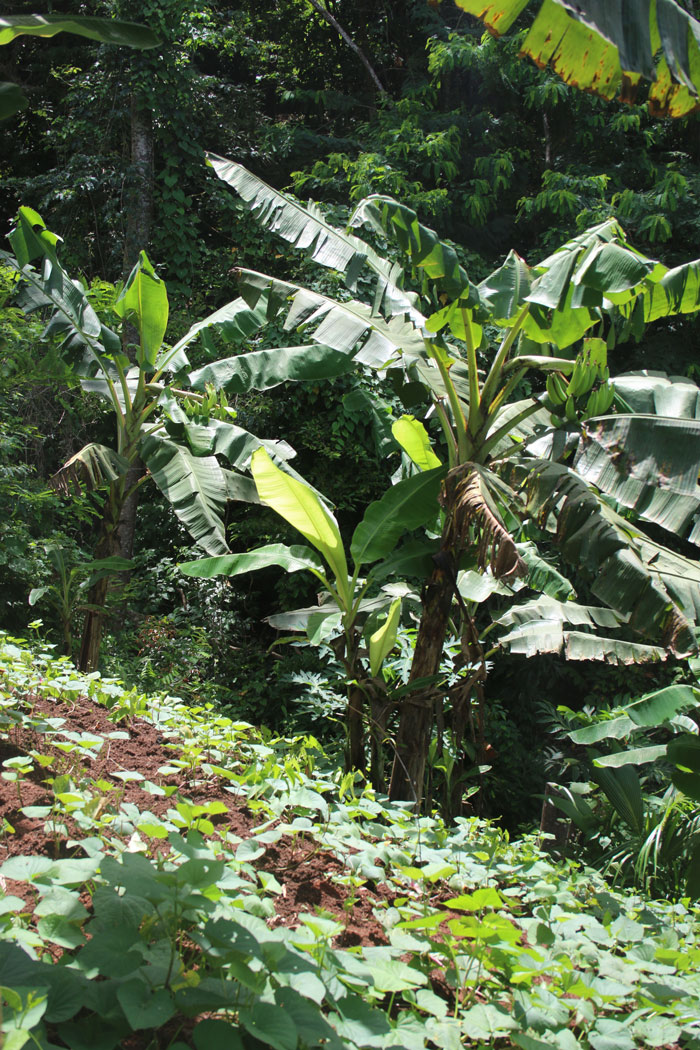
One more thing I should mention: the farmer was also growing pineapples around the edges of this plot:
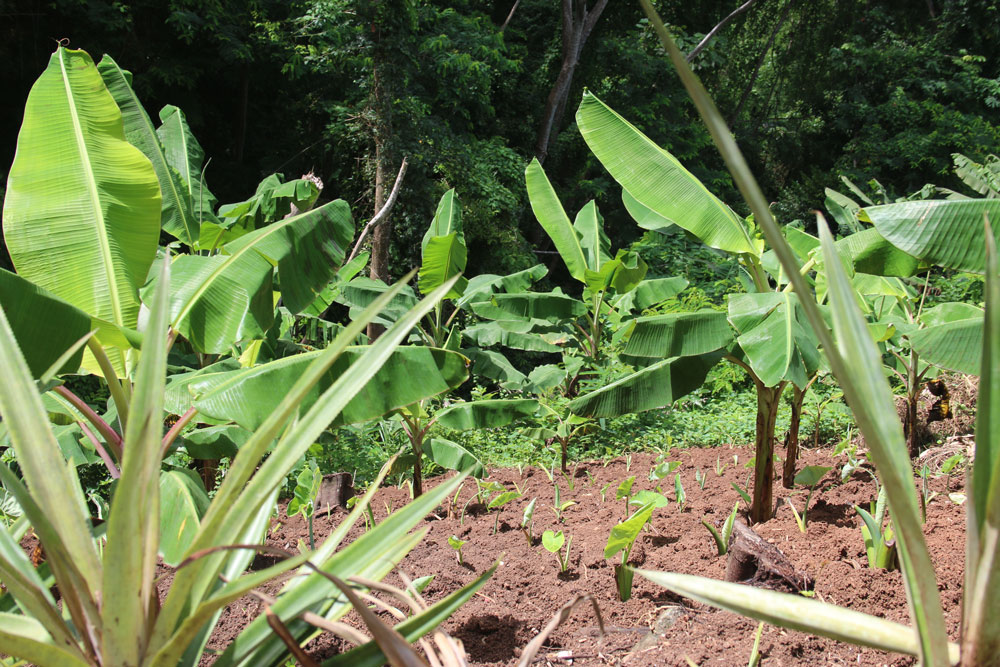
In the middle there you can see more malanga and some young bananas or plantains.
Sweet.
But what if I live up North?
If you are a reader up north, don’t despair. There are some excellent inter-cropping systems for you as well. Though the tropics are abundant year-round, don’t write off the potential of trees such as chestnut, pecan, walnut, and even pears.
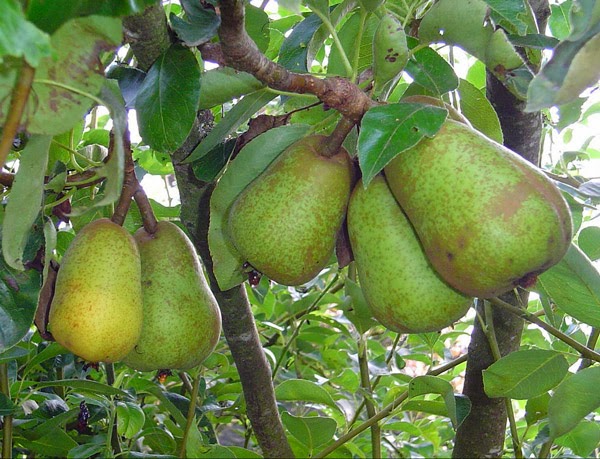
I used to have gooseberries and Nanking cherries growing beneath my pear trees in Tennessee.
Plant some horseradish and rhubarb around those and you’re doing better.
Plant a broad swath of Jerusalem artichokes at the edge of your forest.
Leave open spaces and in summer plant corn, beans, pumpkins and other staples that have been used for generations by natives and European settlers.
Unlike my Florida gardening friends, you Northerners often have the benefit of good soil. Make use of it!
My brother in Virginia took me on a virtual tour of his garden the other day. He has blueberries and fruit trees, strawberries, pumpkins and tomatoes, beans and all kinds of wonderful things growing together sprawling across his yard in the rich soil.
As we come into fall, think about the trees you could plant. Plant them. In spring, garden around those young trees. If you leave their spacing far enough apart, you’ll always have enough light to grow yourself some short crops while the sun shines.

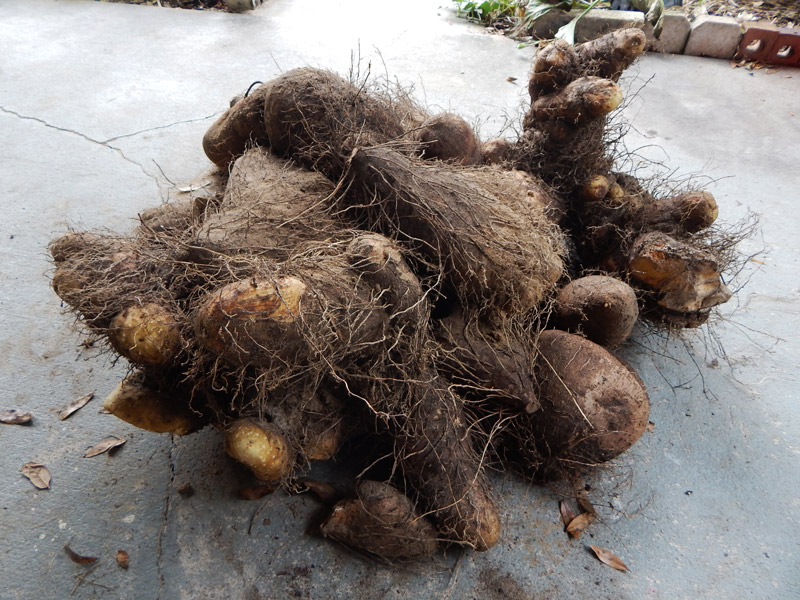
5 comments
I am drooling over THAT SOIL. Is it as good as it looks?
How does the harvest rotate? Do they harvest “ground provisions” on a regular cycle, or leave them in the ground until they need them to eat?
The soil is amazing. Different plants come in at different times according to when they plant. The yams have a specific dormancy period and the plantains tend to really start producing after the onset of the rainy season. The dry season can be very dry and that knocks back some of the production; however, with a little irrigation there’s really no limit to what you can produce year-round.
Referring to the banana video, do any of the bananas there have seeds? This video is very interesting, explains the evolution of bananas. https://www.youtube.com/watch?v=ex0URF-hWj4 The terrifying truth about bananas. Check it out.
I see in your videos you whack the whole tree to harvest a bunch of bananas, then mulch the trunk. Will the tree grow from what is lift and become a viable tree again?
Good video. None of the banana varieties I’ve encountered here have seeds. Once a banana tree produces a stalk of bananas, that trunk is done. Usually, the next largest stem produces next. Chop down the one that produces to make way for the next one.
These are great crops, but… how to go about changing one’s diet over from a wheat-bread-cereal-grain-based Western diet? Almost every meal I have includes some form of bread or pasta or rice, all mass-produced ingredients which are possible only in a stable, functional social and economic environment. Do you have any practical pointers for weaning (literally) children addicted to sugar, grain-based starch, heavily processed foods over to what I can provide, namely sweet potatoes, yams, chaya, pumpkins, sunchokes? It will keep them alive, but they won’t need the added stress of drastic dietary changes that would look, taste, and smell very different from what they’re used to. For clarification, these are children of close relatives, and the parents will not let me limit what the kids currently eat. Sooooooo… how do I take a yam and turn it into Pringles, or a sweet potato and turn it into a peanut butter sandwich? A “Pre- and Post-Apocalyptic Cookbook,” if you will?
Comments are closed.